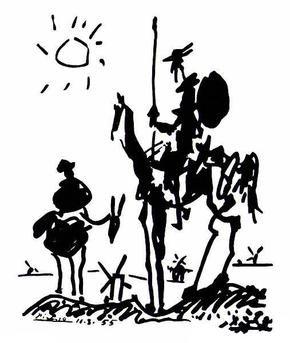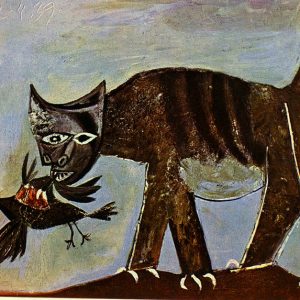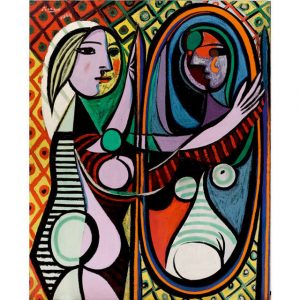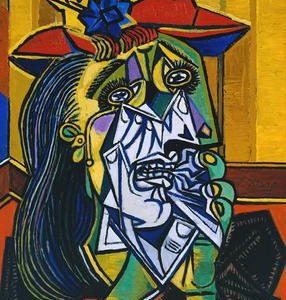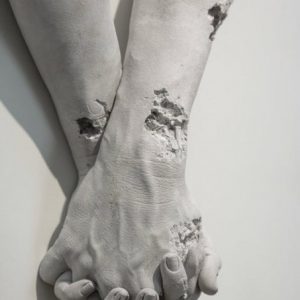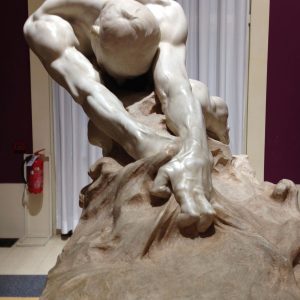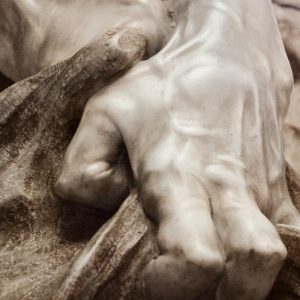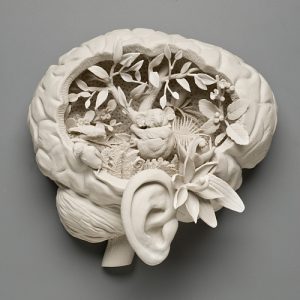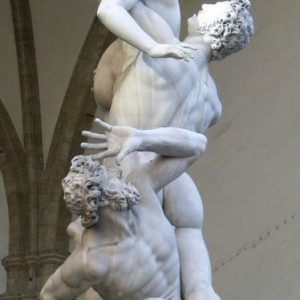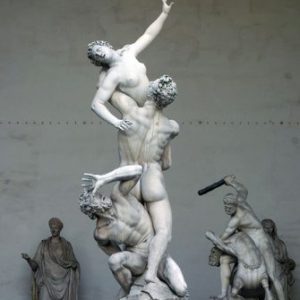The original version, signed by Don Quixote on Aug. 10, 1955, remains stored inside a basement vault at France’s St. Denis Church. The work was featured in the French weekly journal Les Lettres Francaises to celebrate the 350th anniversary of part one of Cervantes’s epic novel “Don Quixote,” released in 1605.
This drawing is of Don Quixote de la Mancha, his horse Rocinante, his squire Sancho Panza and his donkey Dapple, the Sun, and several windmills. The bold lines, almost scribbles, that compose the figures are stark against a plain, white background. The figures are deformed and dramatic. A small, round Sancho Panza looks up at a tall, gaunt Don Quixote, who, in turn, gazes forward. Don Quixote and Rocinante stand bravely, but have a somewhat tired air. The figure, painted with heavy strokes, seems to have been changed multiple times as Picasso painted Don Quixote’s torso, arms and shoulder. “The knight’s head, capped by what would be Mambrino’s helmet, is connected to his shoulders by a neck made with a single, thin line, and it sports a pointed nose and a long, equally thin goatee. He carries a lance in his right hand and the reins and a circular shield apparently in his left. Rocinante is the bag of bones described by Cervantes. Panza appears to the left, a black mass vaguely defining his round body, and sitting on Dapple who has a long, wiry neck and thin, long ears. Little attention seems to have been paid to Panza sketched in the same vein, perhaps because Don Quixote is the center of attention. Though the two figures seem to be standing still, the drawing is full of movement; the lines are exuberant and the overall effect is catchy and one of bright humor.
Read more about Don Quixote here.

